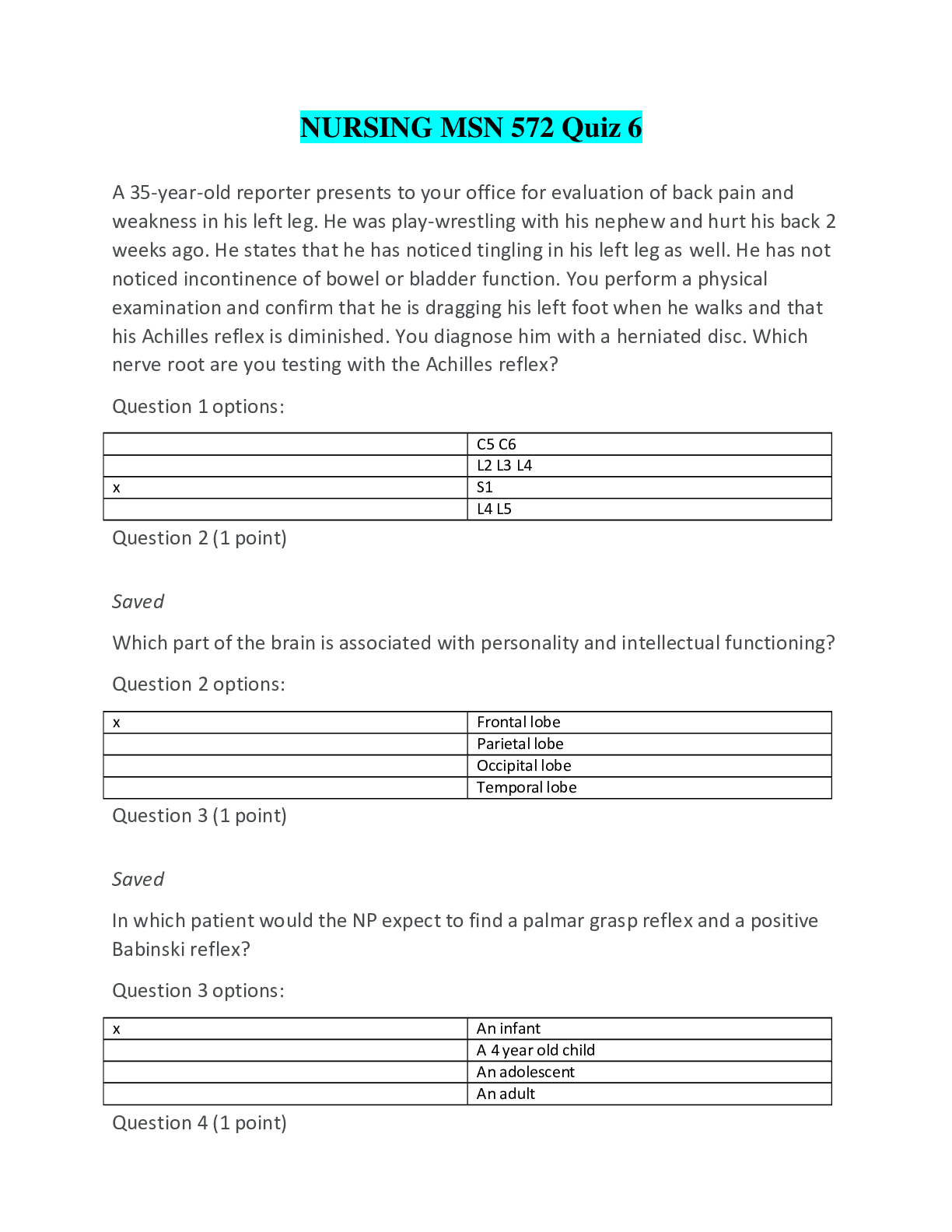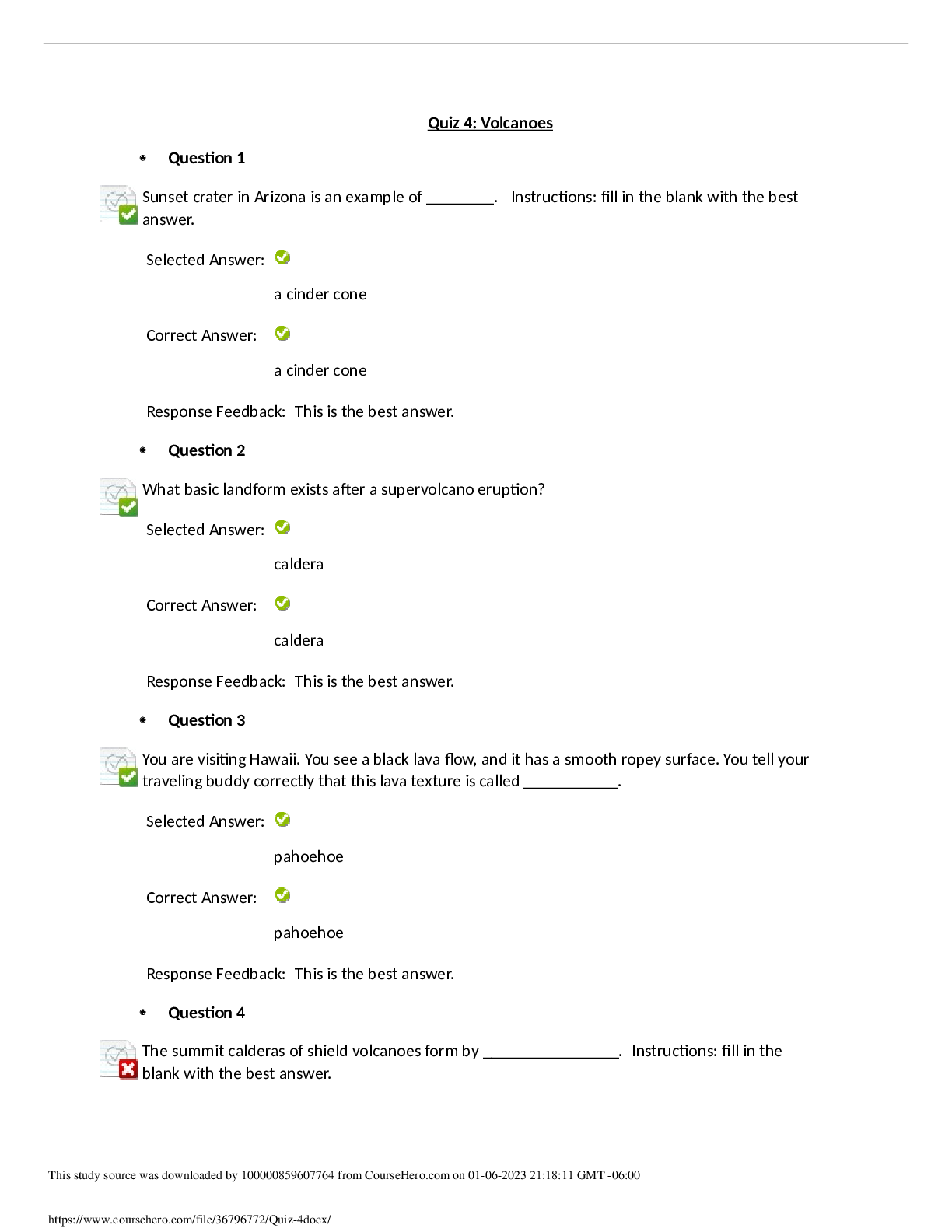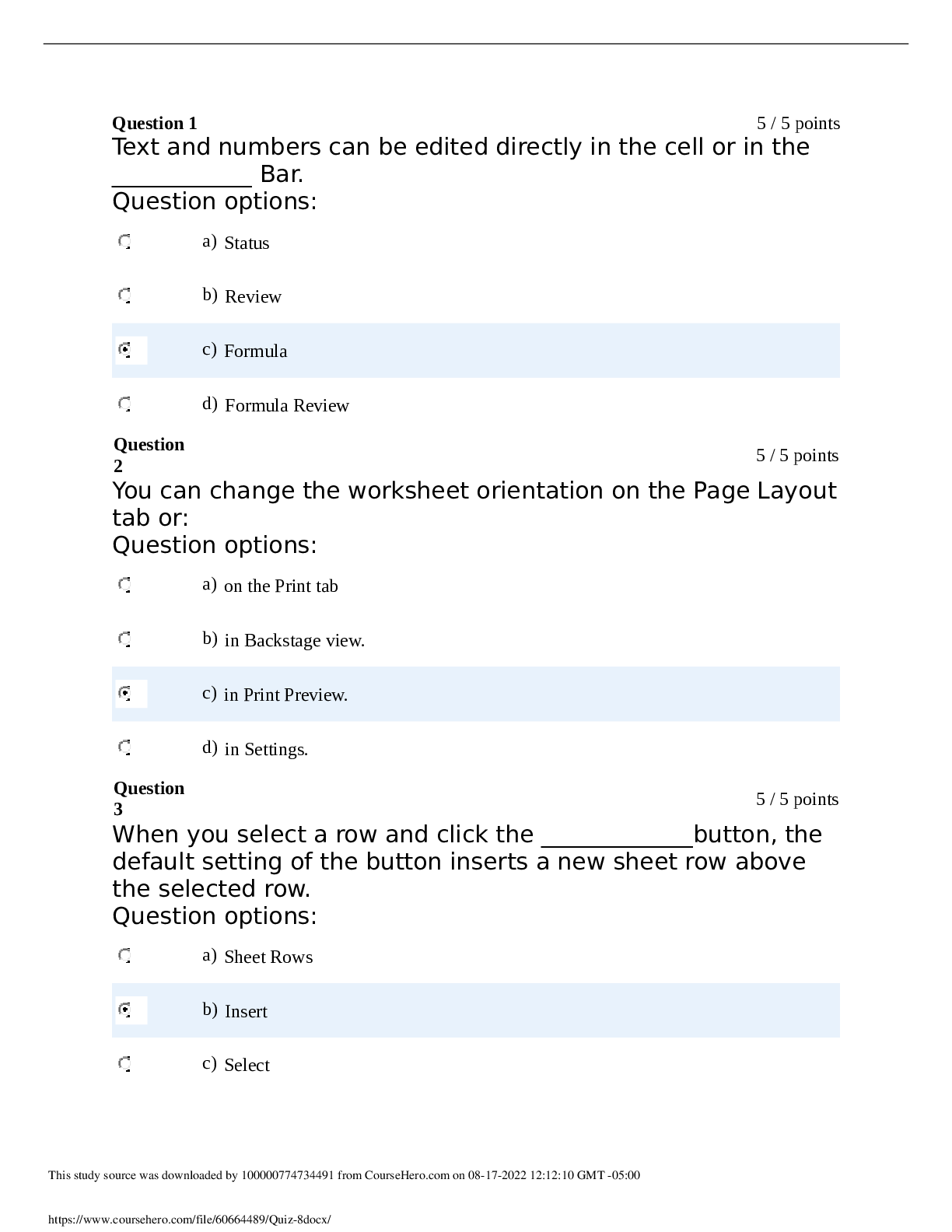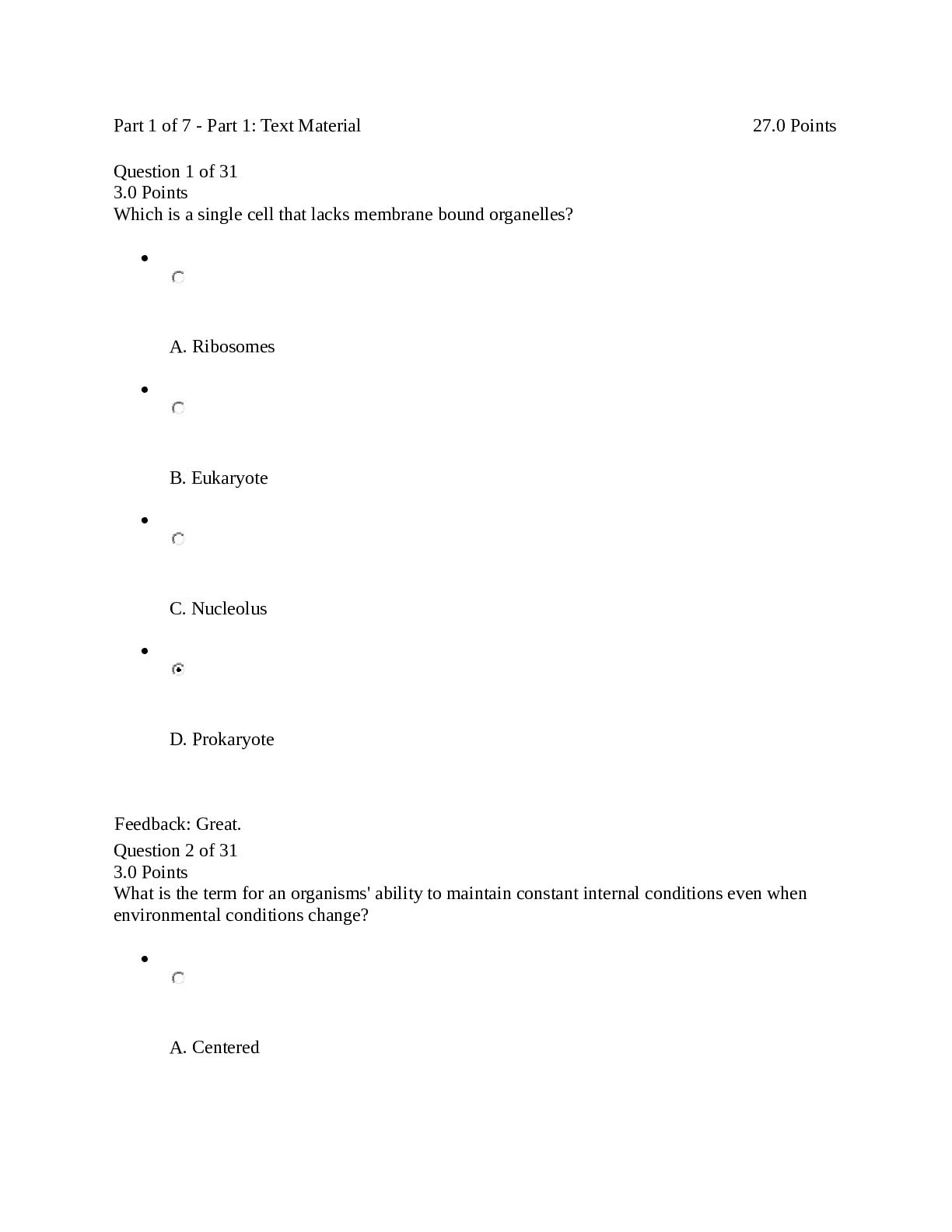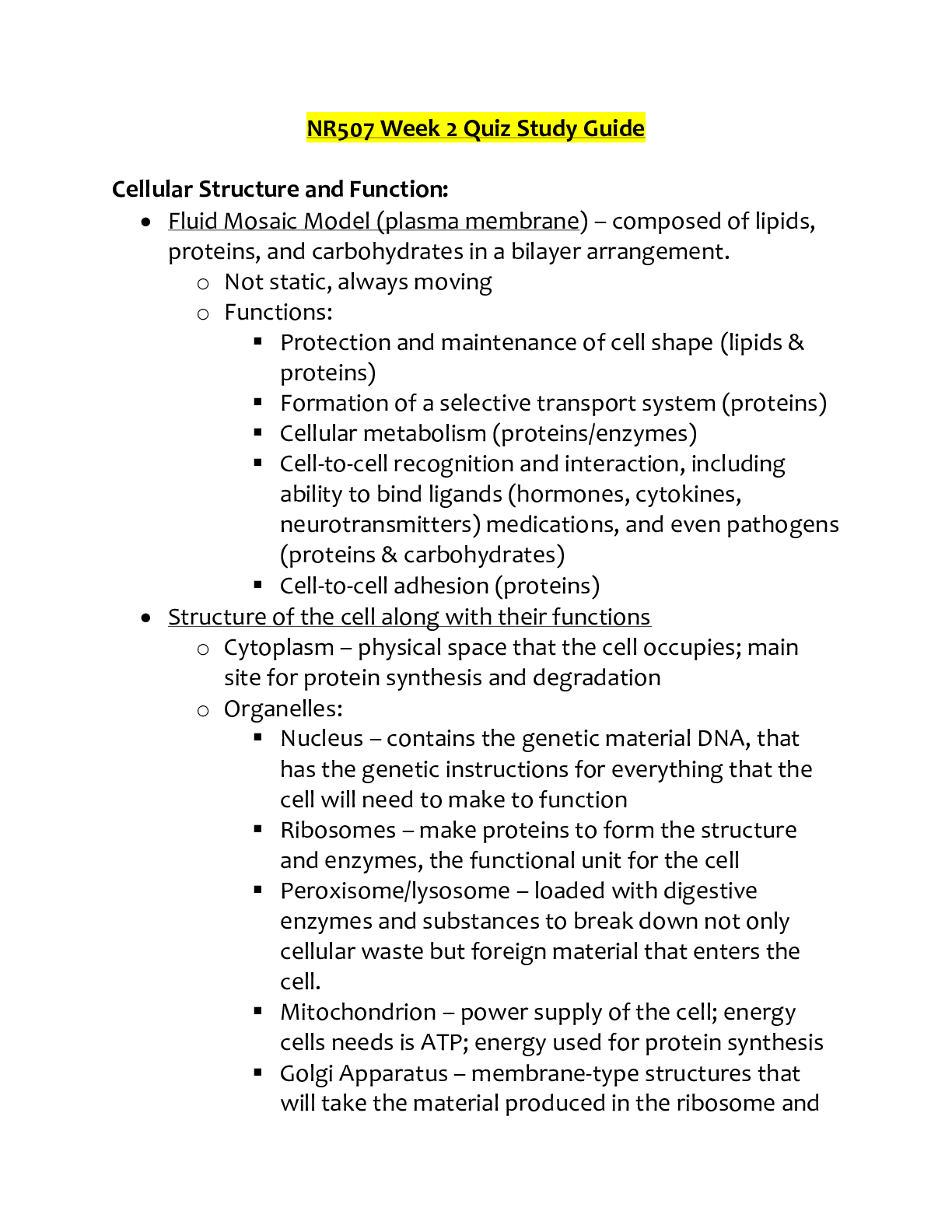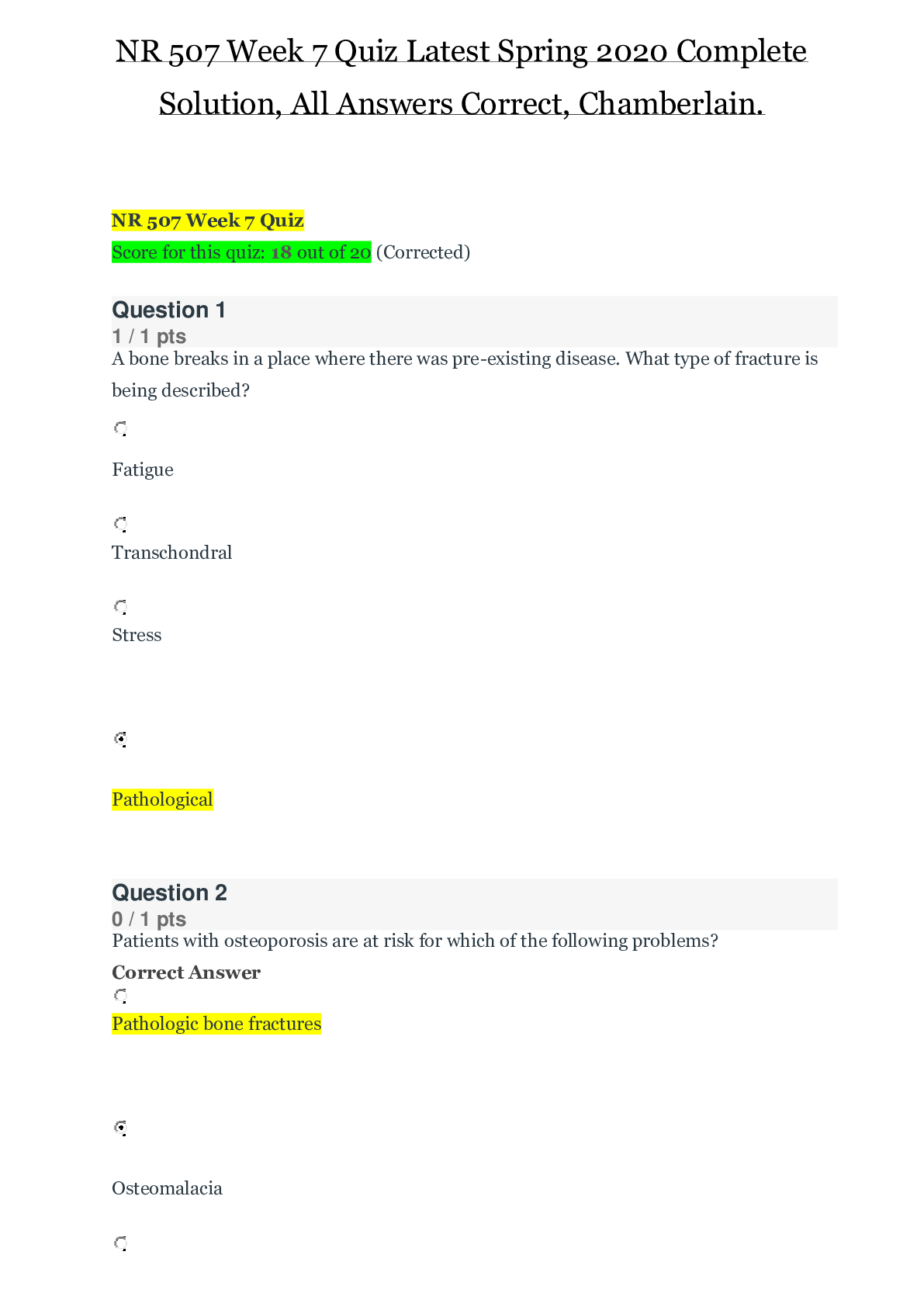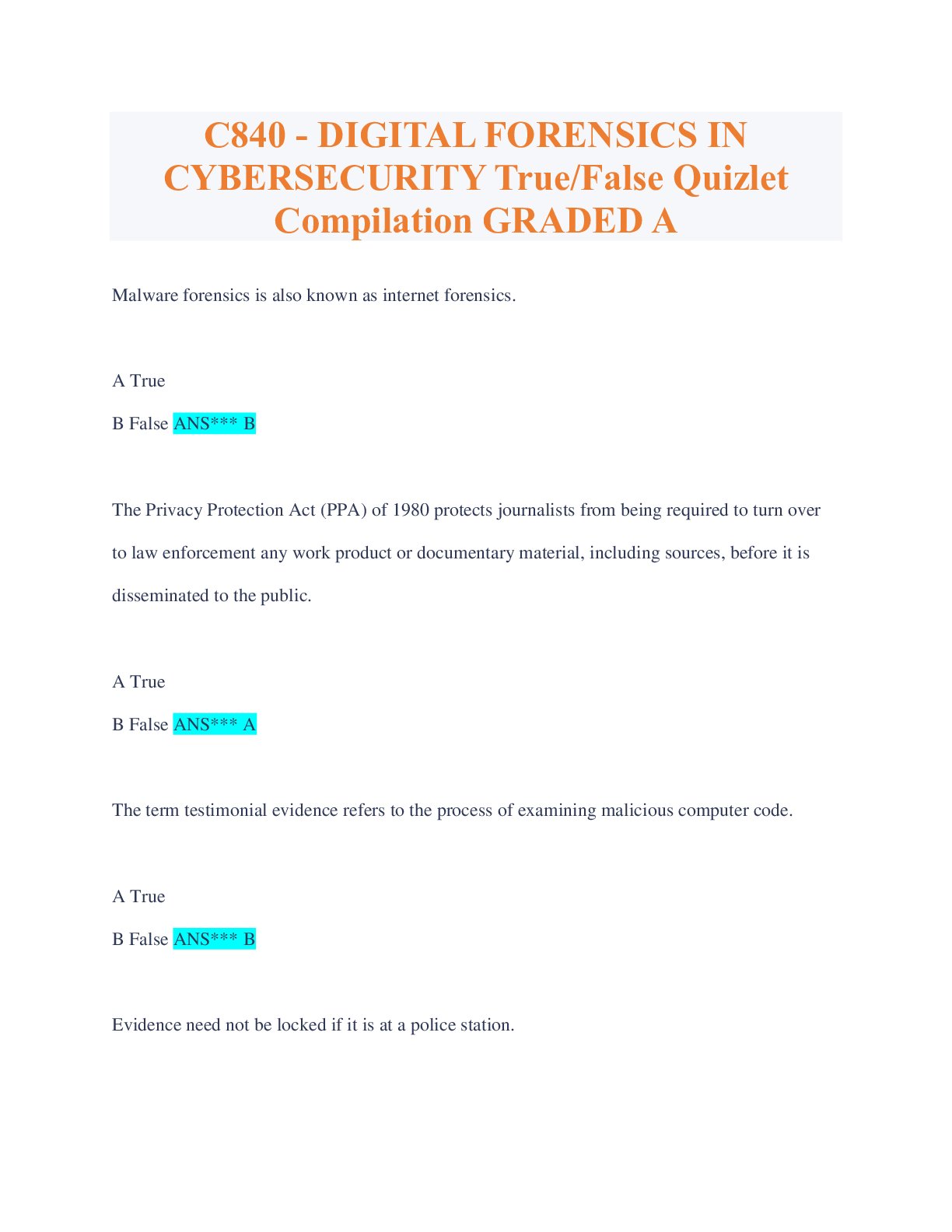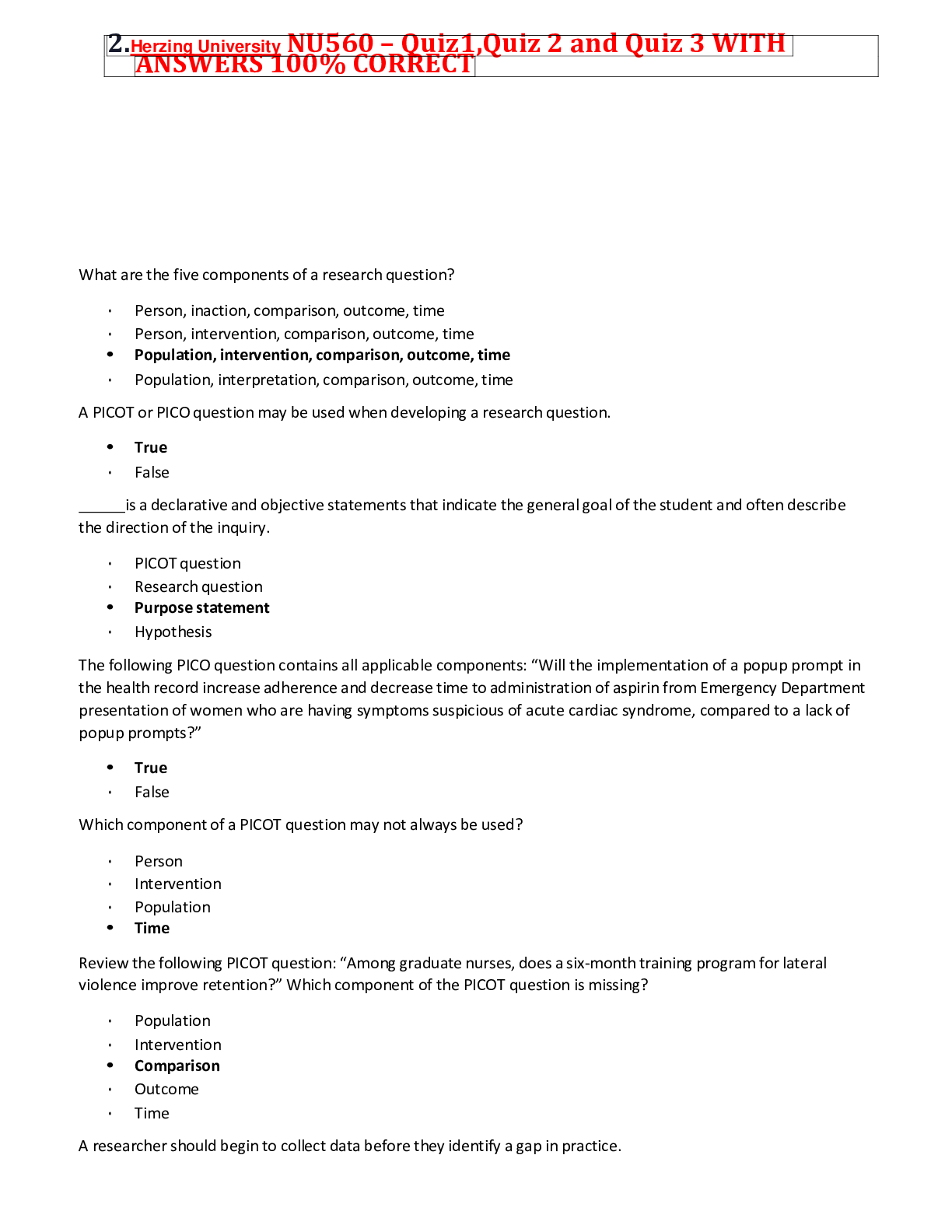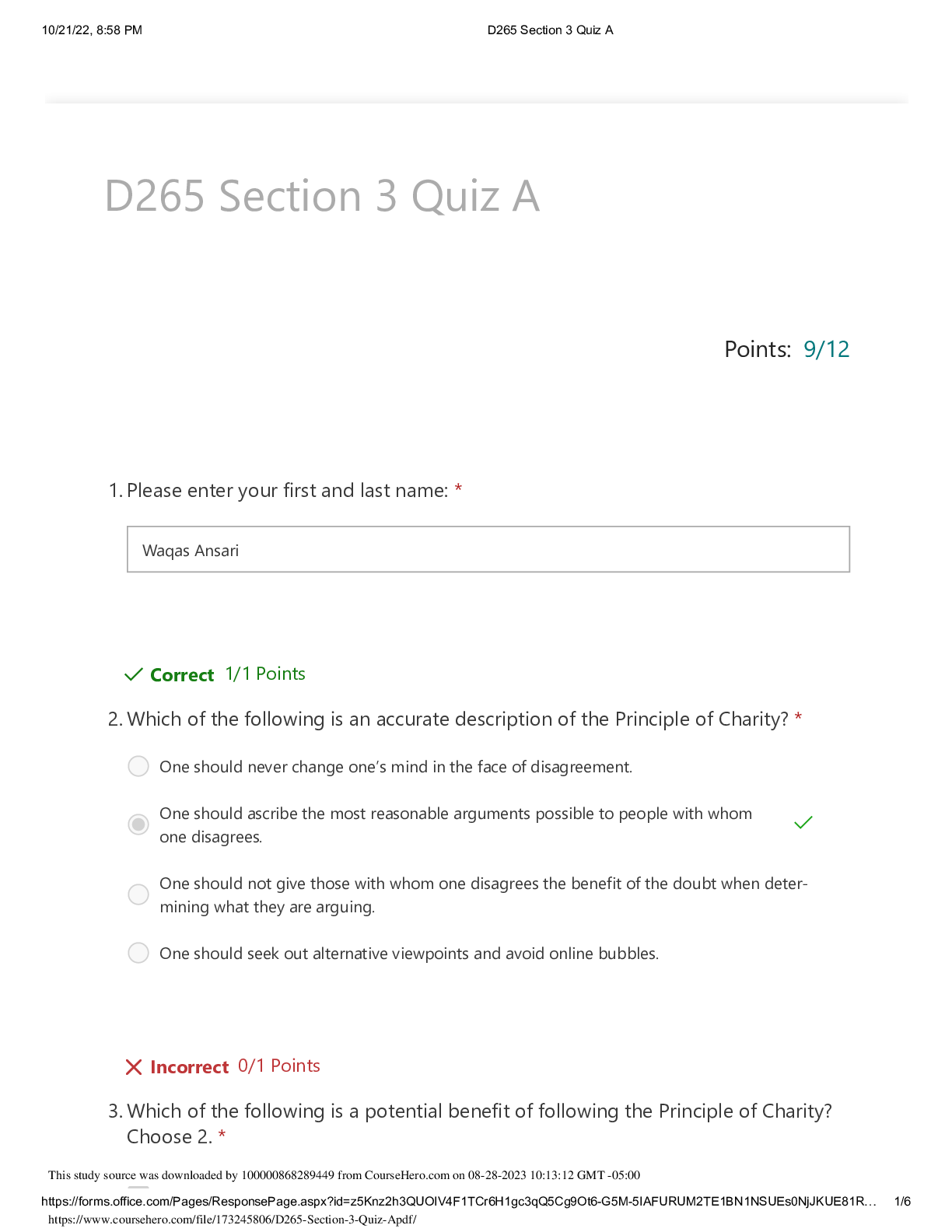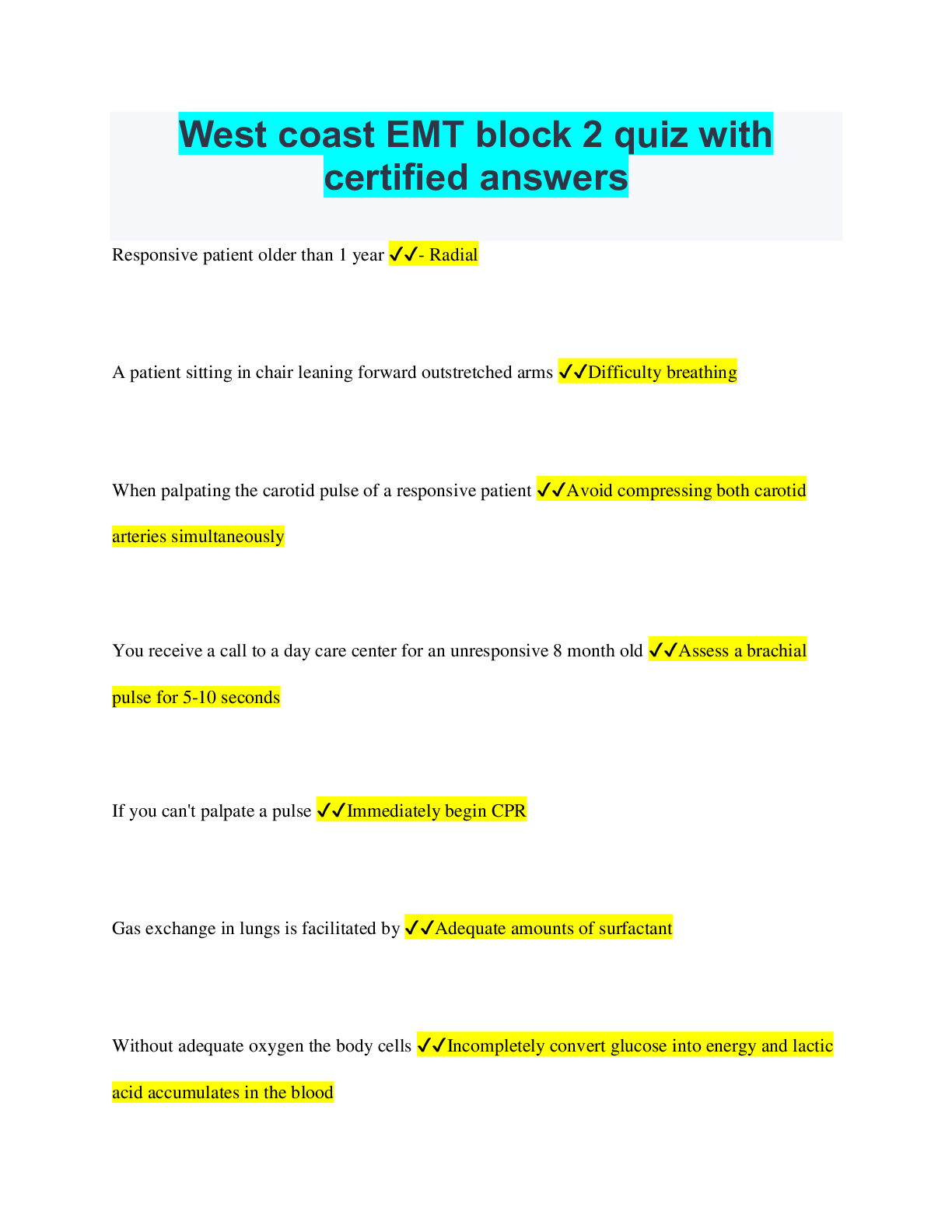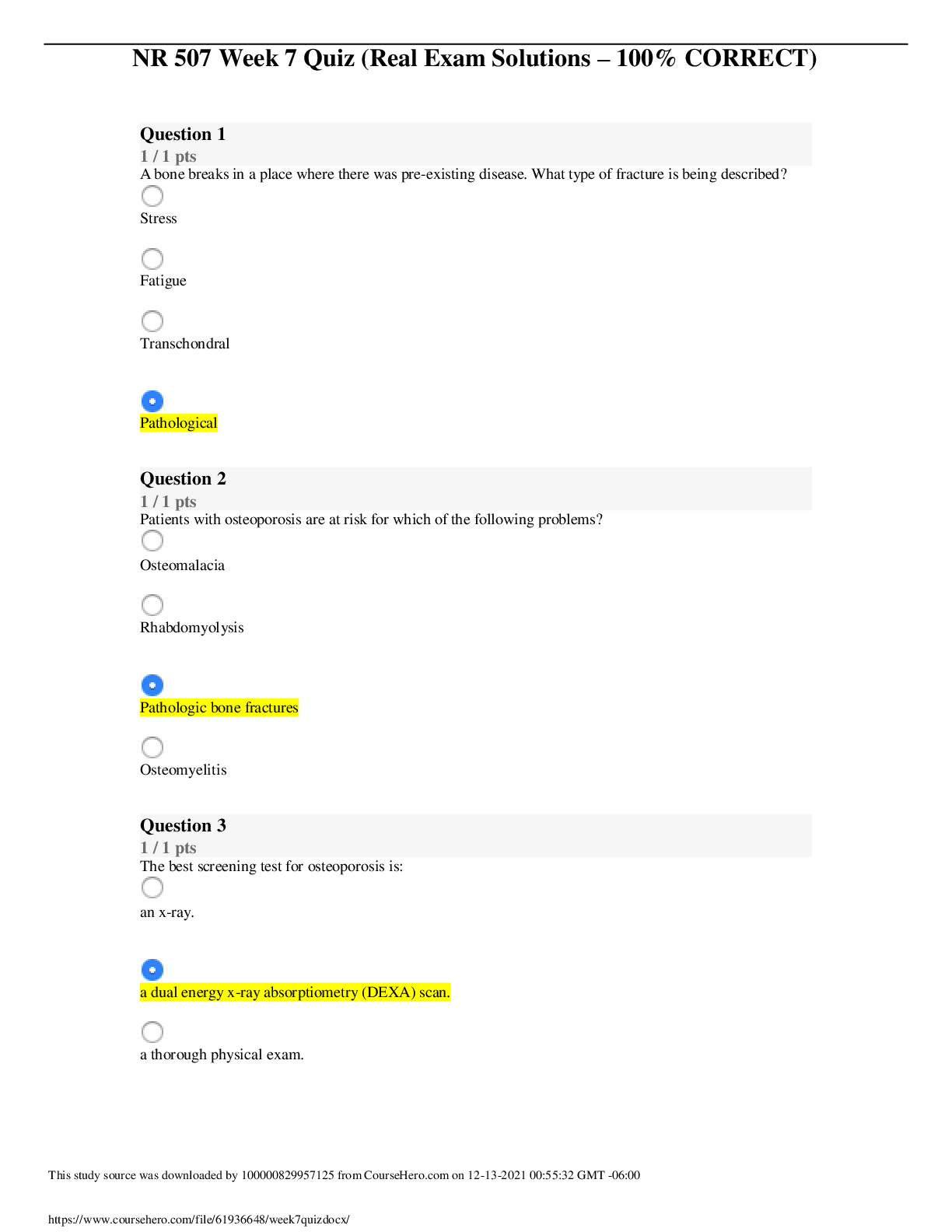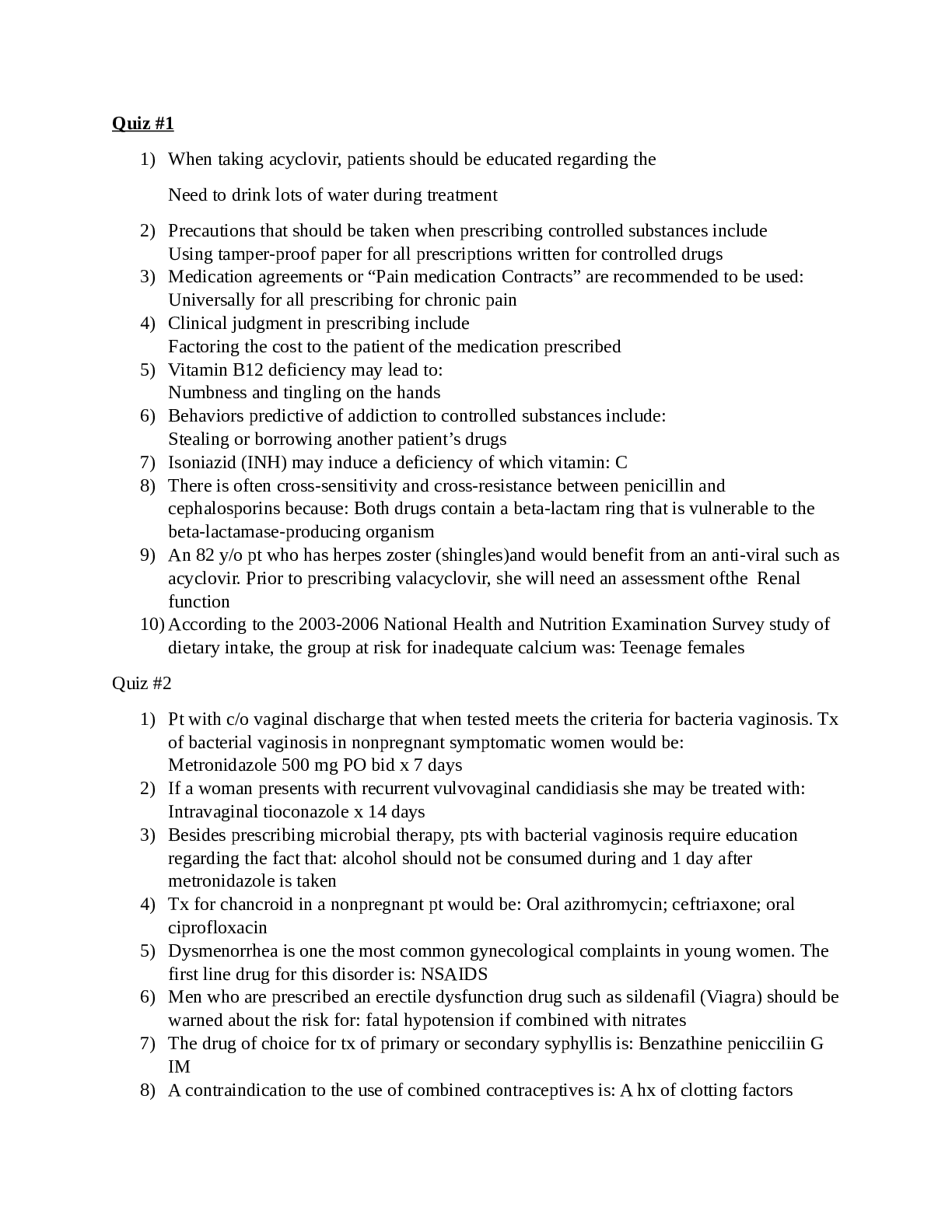American Military University SCIN 130 Week 2 Quiz. All 31 QnA Score 100%.
Document Content and Description Below
Quiz 1 Question 1 of 31 3.0 Points What is the first step in the scientific process? A. Observation B. Data collection C. Prediction D. Hypothesis formation Feedback: Great job. Question 2 of... 31 3.0 Points What is the main reason offspring will belong to the same species as the parents? A. They share the same habitat. B. They share the same environment. C. They share the same food. D. They share the same genes. Feedback: Great. Question 3 of 31 3.0 Points What is the term for an organisms' ability to maintain constant internal conditions even when environmental conditions change? A. Equilibrium B. Centered C. Homeostasis D. Equality Feedback: Great.Question 4 of 31 3.0 Points Which scientific name is written in the proper format? A. Homo sapiens B. Homo Sapiens C. Homo sapiens D. Homo Sapiens Feedback: Great job. Question 5 of 31 3.0 Points Which type of science seeks to expand knowledge regardless of the short-term application of that knowledge? A. applied B. basic C. empirical D. natural Feedback: Great. Question 6 of 31 3.0 Points What is the correct order from highest level to lowest level of taxonomic hierarchy? A. Genus, species, order, family B. Species, genus, family, order C. Order, family, genus, species D. Family, order, genus, species Feedback: All organisms can be separated into groups based on differences and/or commonalities, dubbed taxonomy. Read more on the diversity of life in Chapter 1.Question 7 of 31 3.0 Points Which statement would be a hypothesis using the scientific method? A. If my sprinklers are not working, then my flowers will also die. B. There must be something wrong with my sprinkler. C. Why isn’t my grass growing? D. My grass is not growing. E. I turn on my sprinklers. Feedback: Great job. Question 8 of 31 3.0 Points What is a good basic definition of biology? A. The science that studies life. B. The science that studies rocks. C. The science that studies chemicals. D. The science that studies death. E. The science that studies art. Feedback: Great. Question 9 of 31 3.0 Points Which type of science seeks to use science to solver real-world problems? A. natural B. empirical C. basic D. applied Feedback: Great.Part 2 of 7 - Part 1: Text Material - B 27.0 Points Question 10 of 31 3.0 Points Which of the following is accurate about mutation? A. Mutation results from bottleneck events. B. Mutation is the ultimate source of novel variation. C. Mutation alone is a strong mechanism of evolution. D. Mutation causes gene flow between populations. Feedback: Although there are many processes that can change allele frequencies in a population, only mutation can result in new variation. Read more in Chapter 11. Question 11 of 31 3.0 Points Which is an example of genetic drift? A. Snakes on an island that are unbanded survive better than banded snakes because they avoid predation. B. A bee pollinates purple or yellow orchids dependent on the frequency of the flower color in the population. C. Finches with large beaks survive and reproduce more after a drought. D. Ten butterflies that are migrating get swept off course and start a new island population. Feedback: Genetic drift can occur from random situations like bottlenecks and founding events. Read more in Chapter 11. Question 12 of 31 3.0 Points What is an example of gene flow? A. In a population flowers that carry purple alleles are pollinated more often. B. A new purple allele arises in the population by mutation.C. Purple alleles are introduced into population by migration. D. Purple alleles result in allopatric speciation. Feedback: Review Chapter 11. Question 13 of 31 3.0 Points What does the famous quote from Theodosius Dobzhansky “Nothing makes sense in biology except in the light of evolution”? A. This quote means that many questions about evolution are still being answered so we should seek to understand those first. B. This quote means that all other questions in biology are tied together by the diversification over time from a common ancestor. C. This quote means that the thermodynamic principles that govern light are important to how organisms have diversified over time. D. This quote means that since every species eventually goes extinct we must try to understand biology before this happens. Feedback: All of life has diversified and changed from one generation to another which is the definition of evolution. Read more in Chapter 11. Question 14 of 31 3.0 Points What is the change in a population’s allele frequency from one generation to the next that is due to chance known as? A. genetic drift B. mutation C. natural selection D. migration Feedback: Unlike natural selection that leads to adaptation, genetic drift is a process that is based on random statistical sampling. Read more in Chapter 11. Question 15 of 31 3.0 PointsHow did Darwin define evolution? A. change in allele frequency over time B. inheritance of acquired characteristics C. adaptation to climate D. descent with modification Feedback: Darwin described an evolutionary process that occurs when change happens in populations over generations. Read more in Chapter 11. Question 16 of 31 3.0 Points What did the modern synthesis add to the theories of Darwin and Wallace? A. The concept of natural selection. B. A modern understanding of cellular respiration. C. Mechanisms of inheritance of traits. D. A framework for understanding limited resources. Feedback: Great job. Question 17 of 31 3.0 Points Homologous structures: A. occur in unrelated species. B. evolve from a common ancestor. C. are a result of the bottleneck effect. D. result from divergent evolution. Feedback: Great job. Question 18 of 31 3.0 Points What is one of the three principles that results in natural selection?A. Inheritance of acquired characteristics creates a strong evolutionary force. B. Individuals in a population have the same ability to survive and reproduce. C. Characteristics are inherited from parent to offspring. D. Resources are unlimited and arise from the endless supply of energy from the sun. Feedback: Great job. Part 3 of 7 - Part 2: Lecture 9.0 Points Question 19 of 31 3.0 Points A molecular biologist notices something different in the genetic profile of an individual, performs careful research, and thinks he discovers a new gene responsible for high blood pressure in humans. The last step is an example of what part of the scientific method? A. Question B. Hypothesis C. Observation D. Experiment E. Conclusion Feedback: Great job. Question 20 of 31 3.0 Points Biology is the study of life, as such it is focused on the things that are living or called what? A. Biotic B. Abiotic C. Vital D. Auxiliary E. InorganicFeedback: Great job! Question 21 of 31 3.0 Points Currently, scientists classify all living organisms into three domains of life EXCEPT which? A. Mammalia B. Archaea C. Bacteria D. Eukarya Feedback: Great job! Part 4 of 7 - Part 3: Lab 9.0 Points Question 22 of 31 3.0 Points Which scientist contributed to the study of geology by studying the movement of glaciers? A. James Hutton B. Christian Doppler C. Gregor Mendel D. Charles Darwin E. Louis Agassiz Feedback: Correct! This scientist studied glaciation, and his observations led to the discovery of historic ice ages. Question 23 of 31 3.0 Points Which of the following is the second step in the scientific method? A. HypothesisB. Observation C. Prediction D. Experiment E. Data Analysis Feedback: Correct! The scientific method is a systematic, multi-step process by which scientists test hypotheses. Question 24 of 31 3.0 Points The scientific method has been applied to all of the following EXCEPT ___________. A. Mass conservation B. Apparition sightings C. Movements of Glaciers D. Principles of inheritance E. Doppler effect Feedback: Scientific evidence arises when multiple scientists can reliably and repeatedly make the same observations or collect similar data about the same scientific phenomenon. Review the scientific method in the Week 1 Lab ELF Lesson. Part 5 of 7 - Lab Material 15.0 Points Question 25 of 31 3.0 Points Which survey method for elephant counts was an indirect type? A. Individual range B. Dung transects C. Species range D. Individual registration E. Aerial surveyFeedback: Great. Question 26 of 31 3.0 Points Which survey method for elephant counts was a total type? A. Species range B. Dung transects C. Acoustic survey D. Individual range E. Individual registration F. Aerial survey Feedback: Review Lab 1: Scientific Method Question 27 of 31 3.0 Points Which survey method for elephant counts was a sample or direct type? A. Individual registration B. Individual range C. Aerial survey D. Dung transects E. Acoustic survey F. Species range Feedback: Review Lab 1: Scientific Method Question 28 of 31 3.0 Points Which of the following about the importance of elephants is NOT true? A. They knock down trees, maintaining grassland space. B. They allow for other trees to grow by opening up the tree canopy.C. They provide watering holes for other species. D. They disperse seeds up to 57 km from where they were ingested. E. They trample every bush, clearing the way for small rodents. Feedback: Review Lab 1: Scientific Method. Question 29 of 31 3.0 Points As mentioned in the lab, in addition to poaching, why have elephant populations been decreasing over the last few years? A. Food Shortage B. Habitat Loss C. Climate Change D. Water Issues Feedback: Review Lab 1: Scientific Method Part 6 of 7 - Lab Essay 5.0 Points Question 30 of 31 5.0 Points In a few sentences, what was the overall purpose of the lab for this week? You should include 1-2 sentences on the methods and then the overall reason. The purpose for the lab was to better understanding the extension of the elephants. We also learned the process for the surveys and study of the population. Having to learn about the process and studies that are perform helped me understand how it was possible for Scientifics to understand the life of the elephants. They can learn the process and how they move from one place to other by using multiple equipment. Comment: The purpose of the lab this week was to explore the scientific method and how science is conducted through observation studies. The decline of African elephant populations were used as the example.Part 7 of 7 - Lab Upload 8.0 Points Question 31 of 31 8.0 Points Please upload your completed Lab Packet for this week. Make sure your name is on the top in the space provided. [Show More]
Last updated: 1 year ago
Preview 1 out of 12 pages
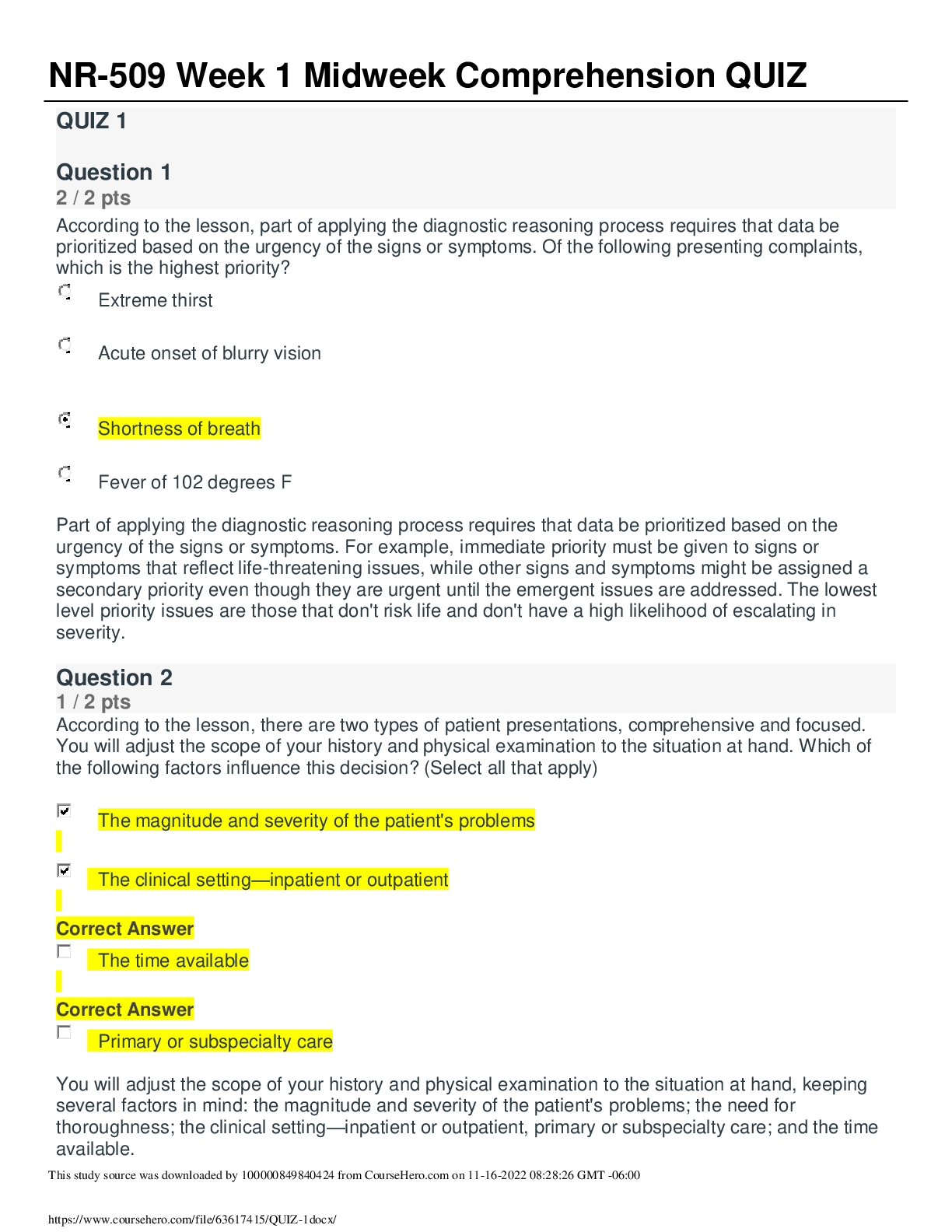
Reviews( 0 )
Document information
Connected school, study & course
About the document
Uploaded On
May 02, 2022
Number of pages
12
Written in
Additional information
This document has been written for:
Uploaded
May 02, 2022
Downloads
0
Views
83

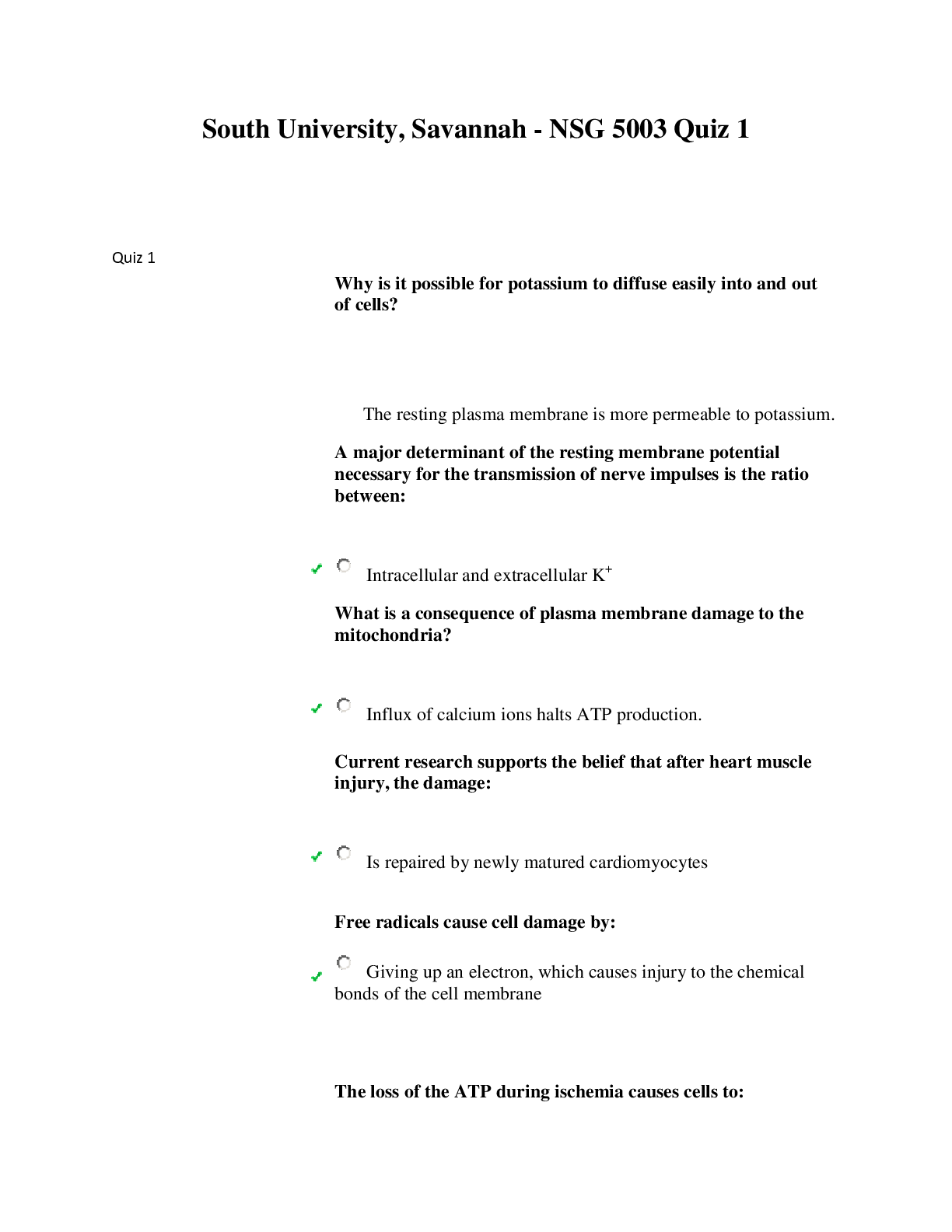
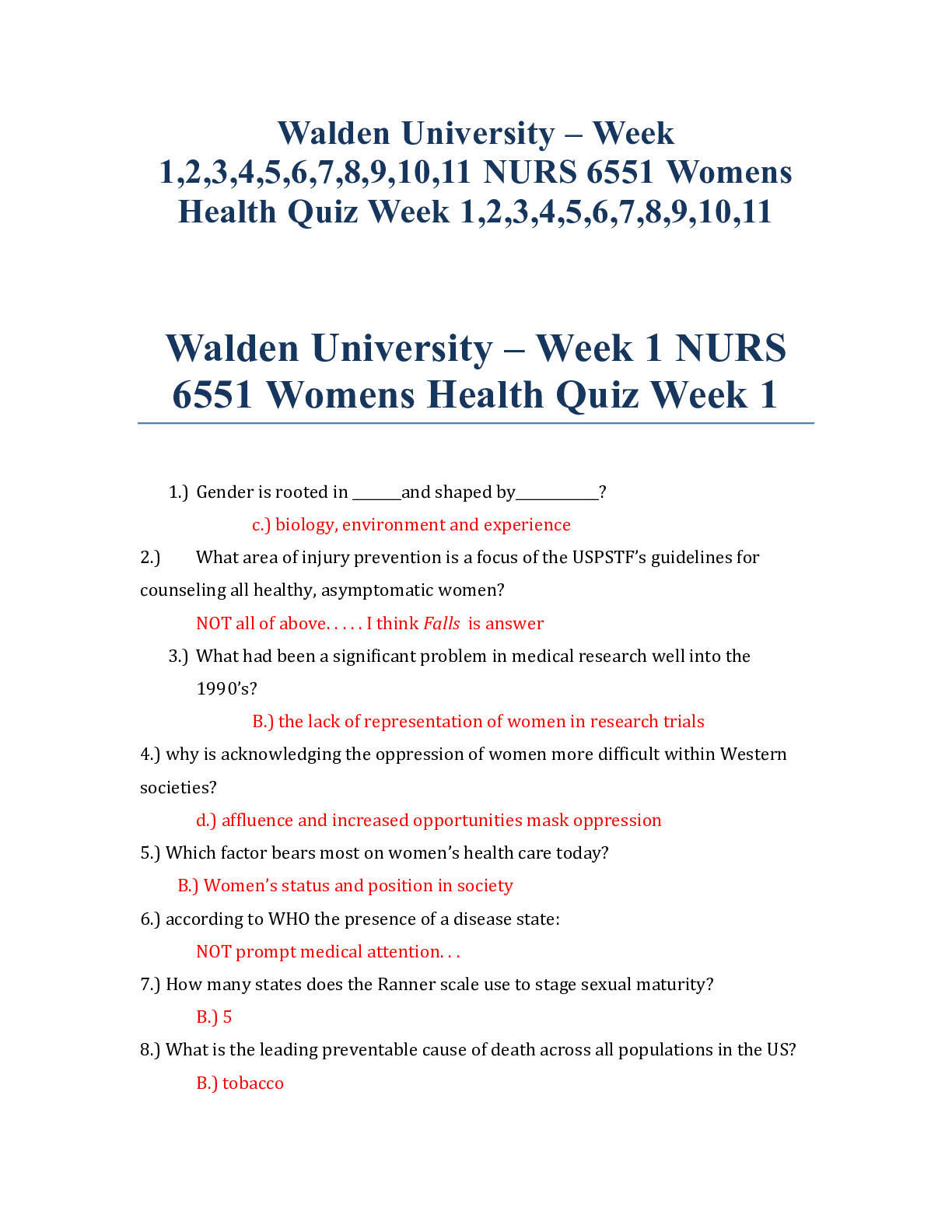


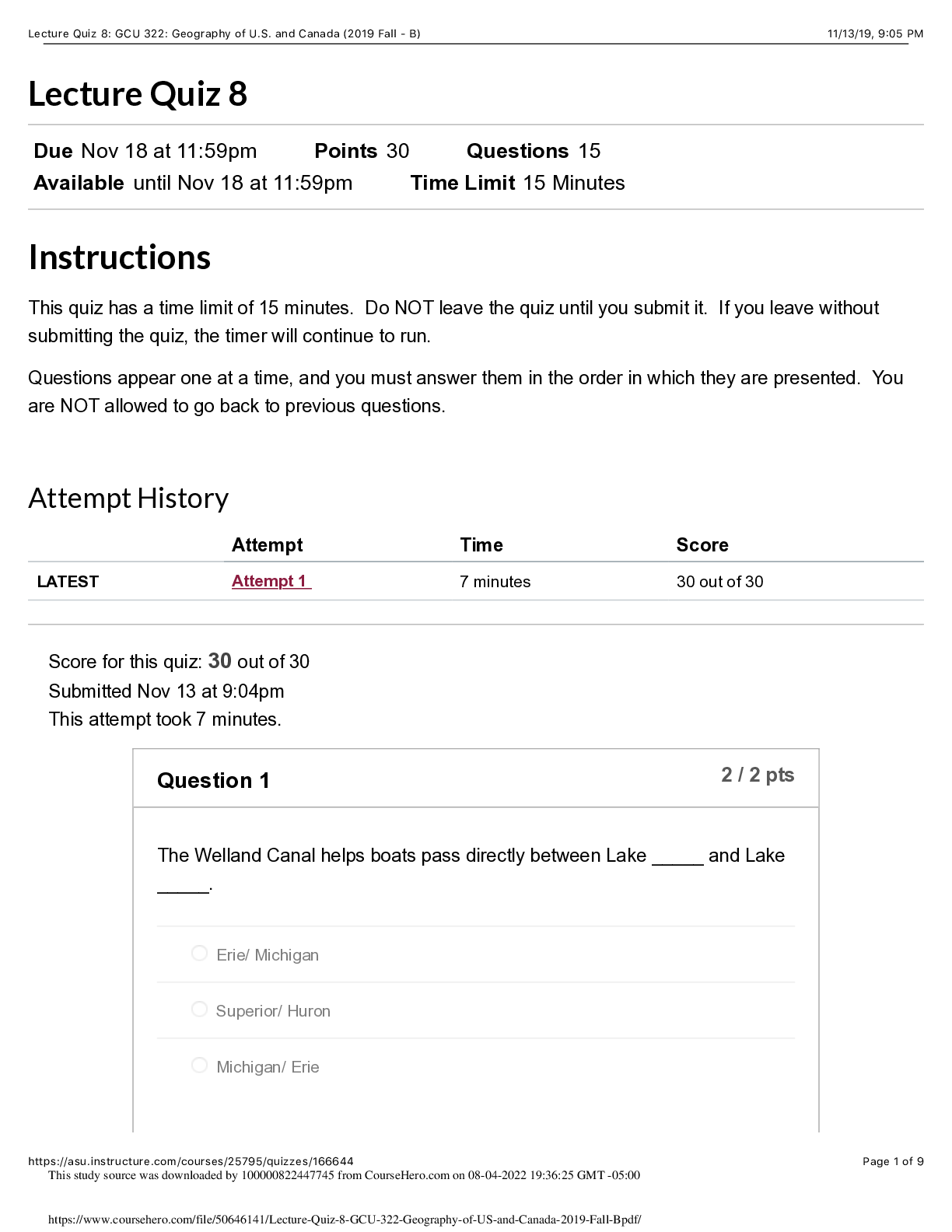

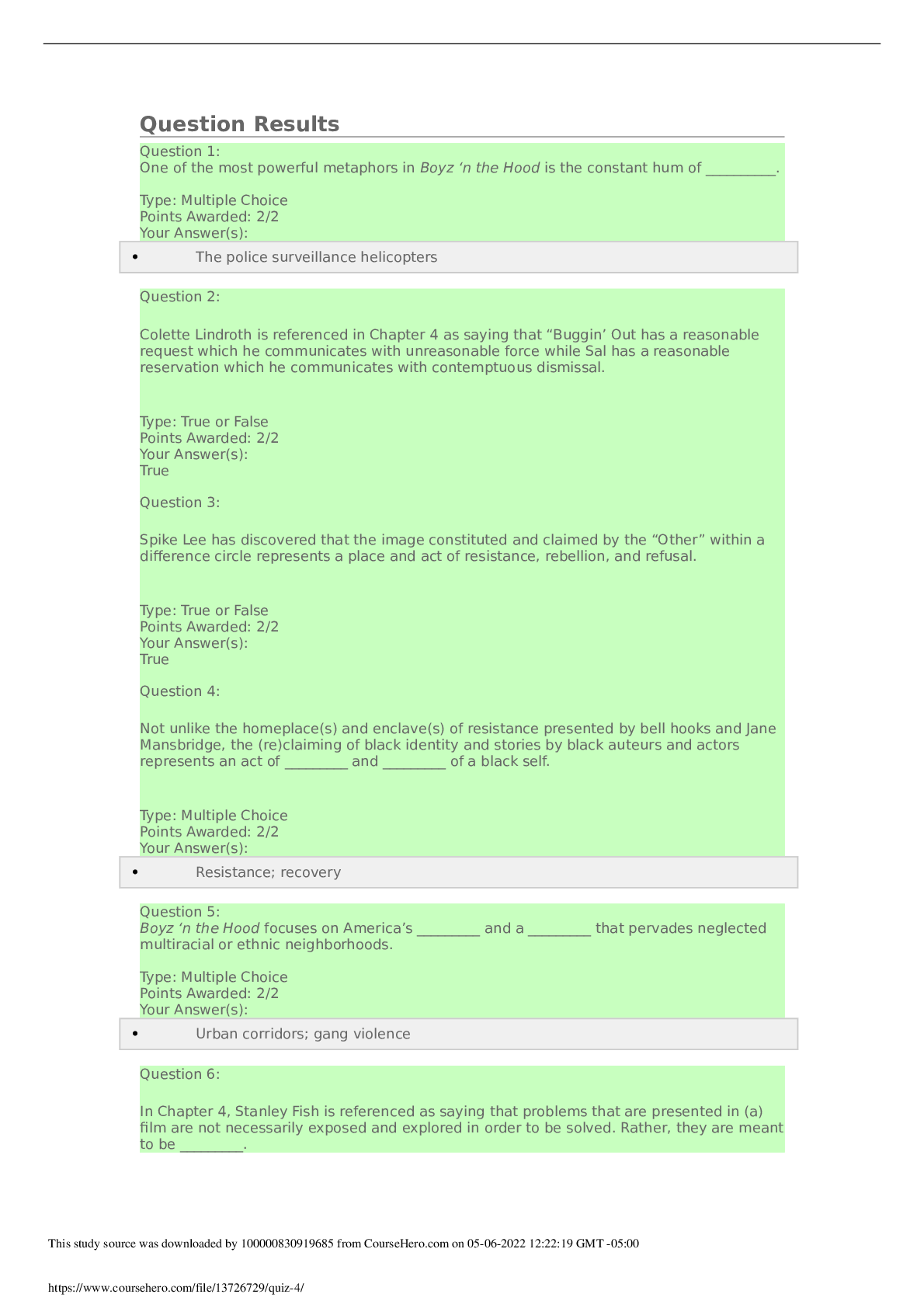
.png)



